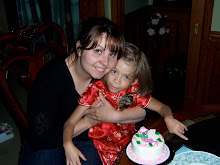DISCLAIMER:
THIS IS STILL UNDER CONSTRUCTION!
Preparation
The content:
• Research your topic
• Prepare an outline of your presentation
o Write 3 or 4 main points which you want to develop
o Write 2 or 3 sub-headings for each main point
• Develop your information using these headings
• Transfer the headings to overhead transparencies (OHTs) or PowerPoint slides
• Mark on your notes when you intend to use an OHT or audio-visual aid, and write down any statistics or examples to support your points
• Prepare some open-ended questions to stimulate discussion after your presentation, if required
Audio-visual aids
• Prepare visual aids e.g., OHTs, PowerPoint slides, pictures, videos, models
• Prepare any material for handouts (e.g., a summary of your presentation)
• Remember that visual aids are AIDS and should not distract the audience from the spoken delivery
• Use the 7 x 7 rule: no more than seven lines of seven words per slide or OHT
• Use a plain font like Arial and a large font size (e.g., 22 point) on your visual aids
• Cue any tapes and videos so they are ready for immediate use
The room
• Check the equipment is functioning properly and you can use it confidently
• Leave enough time to rearrange the furniture, if necessary
Your delivery
• Practice using the equipment and your visual aids
• Practice making eye contact with people in different parts of the room
• Make a tape recording of your delivery to check how your voice sounds
• Time yourself to check your presentation is not too short or too long
• Practice in front of a mirror
Structure
An oral presentation is structured much the same way as an essay: Introduction, Body and Conclusion. You will be assessed on evidence of your preparation from academic sources, the relevance of your material to the topic, critical analysis of the topic and the logical structure of your presentation.
However, because your information/argument is spoken rather than written, there are some further considerations:
1. Introduction - tells your audience what you are going to tell them
o Provides some brief background information to show why your topic is important/relevant
o Outlines the structure of your presentation, the order in which you will present your information
o Attracts the audience's attention with, for example, a relevant quote, story, or question for the audience
10% of allotted time
2. Body - tells them
o Contains the main argument of the presentation
o Presents the issues relating to the main argument (thesis statement)
o Includes support/evidence for each of the main issues using:
- statistics
- diagrams
- reference to other research
- examples, reasons
o Is presented in a logical way, using explicit signalling phrases and connectives to signal a new point, an example, a contrast, etc.
70% of allotted time
3. Conclusion - tells them what you told them
o Summarizes the main points discussed in the body
o Evaluates the importance of the information
o Reviews any implications
o Brings the presentation to a smooth and natural close
o Leaves the audience with ideas to think about (e.g., a quote or question)
o If appropriate, gives the audience the chance to ask questions
20% of allotted time
Delivery
• Introduce yourself to the audience
• Clearly outline the structure and content of your presentation
• Engage the audience using eye contact
• Use your notes, but look up frequently: NEVER read your information
• Speak clearly and try to look relaxed and confident
• Signal your points showing how ideas relate to each other
My next point is
In contrast
• Don't speak while giving handouts to the audience
• Look at the audience while referring to points on OHTs or slides
• Make sure you keep to the allotted time for your presentation
Audience participation
If your lecturer expects this to be included in your presentation, you can encourage the audience to participate in discussion by:
• asking open questions or personalising the issues
• beginning the presentation with a brief handout displaying interesting questions, key concepts or a diagram
• setting a problem-solving task for small groups to discuss
• using the PAIR discussion strategy near the beginning and again at various times during your presentation:
P repare by taking a minute to jot the answer to an interesting general question
A sk other people about their jottings for a minute or so
I nteract for further discussion in the same pairs, or threes or fours
R eflect on or Revise the initial jotting (a brief sentence only)
Name: ....
Date: ....
(Sample used with permission)
Title: Voting: Our Legal Right
Specific Purpose: To persuade my audience to vote in elections
Introduction:
I. Gain audience's attention by asking questions
II. Establish credibility - I vote
III. Explain what voting is
IV. Preview the body:
A. Why we vote
B. Why we don't vote
C. Why we should vote
Body:
I. Why we vote
A. To elect representatives
B. Constitutional right
1. Article 1
2. Amendment 15
3. Amendment 19
II. Why we don't vote
A. Figures on low voter turnout
B. Some don't care
C. Some are not educated about candidates
III. Why we should vote
A. To voice our opinions
B. To guarantee our freedom
Conclusion
I. Summarize main points
II. Explain how to register
III. End with Quotation
Subscribe to:
Post Comments (Atom)

No comments:
Post a Comment